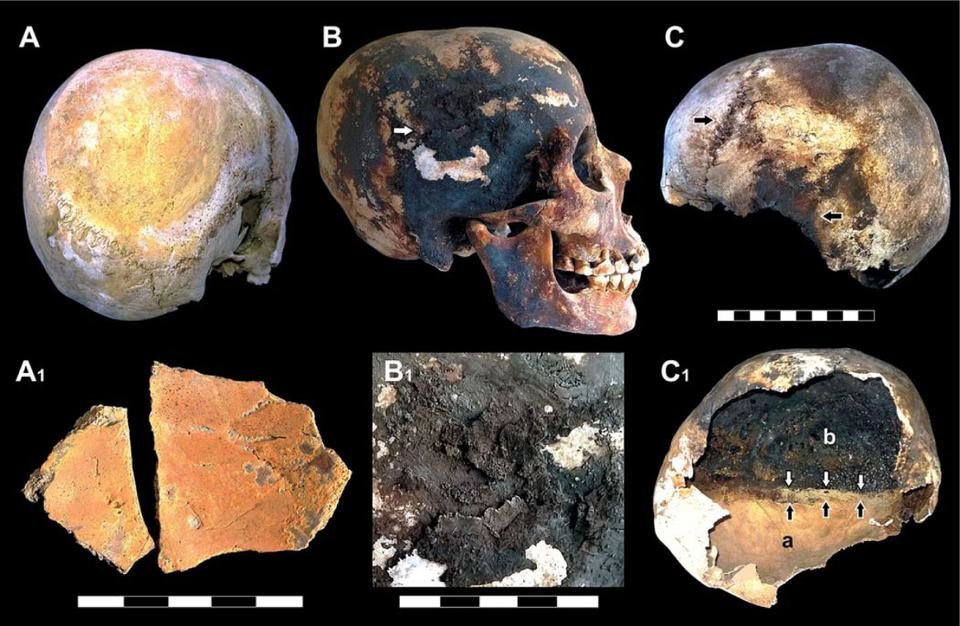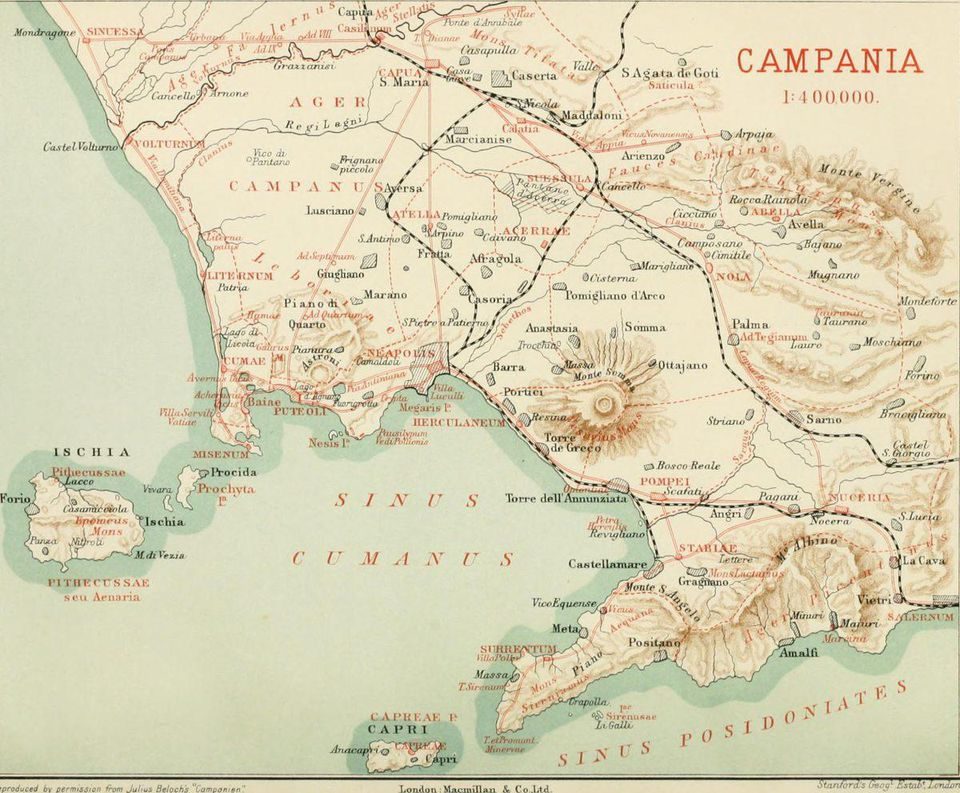
Writing last week in the journal PLOS One, a team of Italian researchers, led by Pierpaolo Petrone of the Federico II University Hospital in Naples, Italy, has revealed that numerous skeletons recovered from the waterfront chambers at Herculaneum were covered in mysterious red and black mineral residues. Based on mass spectrometry and microspectroscopy, the team hypothesizes that the residues represent iron from human blood that was exposed to extreme heat.
The so-called boat houses at Herculaneum where approximately 140 skeletons have been found were not excavated until the 1980s, as the massive site was buried underneath 20 meters of volcanic deposits. These skeletons were removed for laboratory analysis, and the bodies that tourists today stop to examine are actually fiberglass reproductions.
Previous studies of the skeletal remains from Herculaneum include those related to understanding the ancient diet and disease load. According to an early study by anthropologist Sarah Bisel, overall excellent teeth suggest a diet low in cavity-causing foods, which could be the result of natural fluoride in the water owing to the volcano. Nearly half of the people examined had some amount of osteoarthritis, however, and many others appear to have suffered from childhood diseases or famines. Another study by anthropologist Luigi Capasso notes evidence of respiratory infections, potentially caused by indoor cooking. While many people at Herculaneum were eating seafood, their diet was mostly based on terrestrial meats and carbohydrates.
In 2001, Petrone and colleagues suggested in a Nature paper that the body postures of the victims at Herculaneum were suggestive of thermal shock rather than suffocation by noxious gases or ash, long thought to be the proximate cause of death for many at Pompeii. This very short article mentioned flexion of body parts -- such as curled toes -- as well as charred bones as evidence of instantaneous death from fulminant shock, in which vital activity ceases within a time-span shorter than conscious reaction time. "Their soft tissues were vaporized," the authors wrote, "and the temperature then fell over a few tens of minutes, inhibiting the progress of the pugilistic stance and the disappearance of residual soft tissue."
The new PLOS One article dramatically expands both the scope of the analysis and the number of individuals who were studied to suggest that thermal injury was at least as important as asphyxia in explaining the death of the people of Herculaneum, particularly for those who were stranded on the open beach and not partially sheltered in the boat houses.
Mysterious red and black residues encrusted on the bones and within the volcanic ash were first noticed during excavation. While some of these residues were found near coins and other metal objects, Petrone and colleagues found them also within skulls and on other bones not near any artifacts. The researchers investigated the presence of iron in 103 samples from Herculaneum for this study using ICP-MS, and 22 of those were examined using Raman microspectroscopy, to look for evidence of iron and blood products. Most of these bones were fractured, also suggestive of high heat leading to exploding and cracking of the bone matrix.
Results from the ICP-MS analysis revealed iron in the red residues from the skull and other bones. "These findings indicate that the extremely high content of iron could not be ascribed to volcanic ash or other volcanic products, suggesting that it might have originated from the victims' body fluids," the researchers write. Raman analysis of several of these samples further confirmed that the "red spots from many encrusted samples clearly showed bands characteristic of iron-containing compounds." Although these samples are compatible with an interpretation of human blood, neither analysis definitively confirmed that, however.
Taking the morphological and microscopic analyses into consideration, Petrone and colleagues determine that "in the present work, careful inspection of the victims' skeletons revealed cracking and explosion of the skullcap and blackening of the outer and inner table, associated with black exudations from the skull openings and the fractured bone. Such effects appear to be the combined result of direct exposure to heat and an increase in intracranial steam pressure induced by brain ebullition, with skull explosion as the possible outcome." That is, rising pressure inside the skull as a result of the intense heat surge caused brains to boil and skulls to explode, resulting in the sudden death of scores of people sheltering in the Herculaneum boat houses, hoping to be rescued.
"These findings," the authors conclude, "highlight the need for thorough evaluation of key bioanthropological and taphonomic evidence during archaeological investigations. This is particularly true for the sites affected by the 79 AD Vesuvius eruption, given the high-risk scenario for three million people living today close to the volcano."
Kristina Killgrove is a bioarchaeologist and science communicator. For more ancient news, follow her on Twitter (@DrKillgrove), Instagram (PoweredbyOsteons), or Facebook (Powered by Osteons).




Comment: The evidence shows that Pompeii wasn't an isolated case, because similarly catastrophic events happened elsewhere at that time, as well as before, after, and, if current events are anything to go by, are likely to be reality for many of us in the very near future:
- The destruction of ancient Rome - The barbarians were not responsible
- The year without a summer: 1816
- 'Little Pompeii': Abandoned ancient town in France a 'microcosm of the Roman Empire'
- Pompeii: Newest find shows man decapitated by rock during eruption of Vesuvius
- Embracing figures found beneath molten rock of ancient Pompeii found to be male
- 2,000yo remains of carbonized horse discovered by tomb raiders amongst ruins of Pompeii
- The day Vesuvius buried Pompeii
Also check out SOTT radio's: Behind the Headlines: Earth changes in an electric universe: Is climate change really man-made?